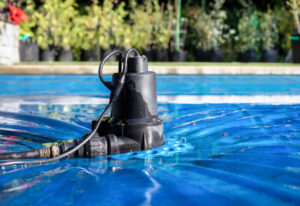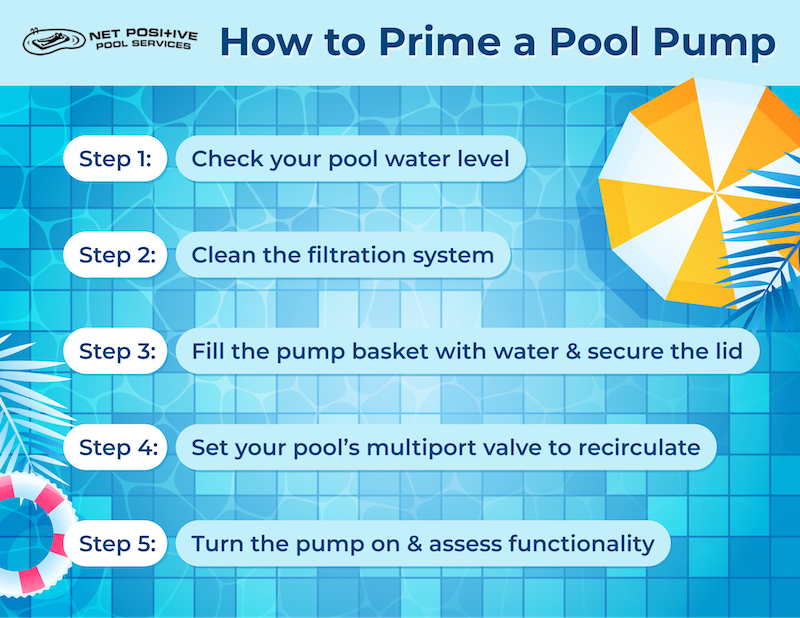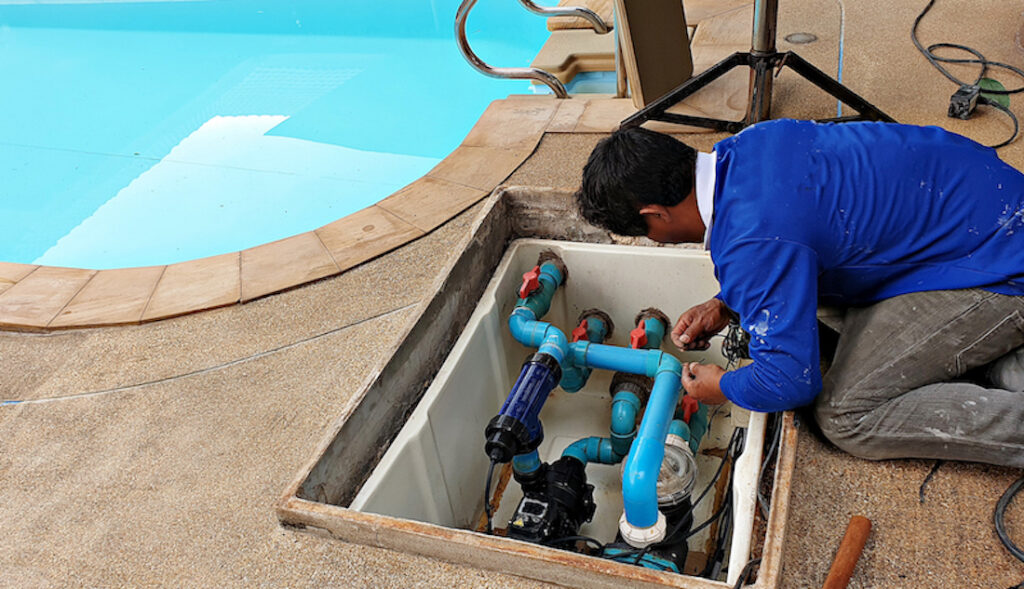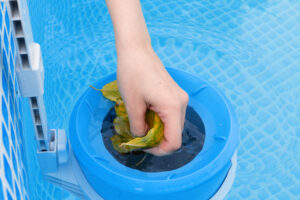If you own a swimming pool, you understand that behind every sparkling pool is a robust and well-maintained pool pump. The pump is the heart of your pool’s plumbing system and serves the critical task of circulating water to keep it clean, well-filtered, and inviting. Before we delve into the nitty-gritty of priming a pool pump, let’s cover the basics.
A pool pump consists of several main components, including the pump lid, pump housing, and pump basket. The pump motor drives the entire operation, propelling water from the pool via the suction line and into the pump basket. From here, the water passes through the filter where debris is removed, and then flows back into your pool through a series of return lines.
Moving parts also contain a variety of valves including a multiport valve, which helps direct water in different directions within the system, and an air relief valve, which releases trapped air in the filter system. These parts are all crucial for the proper functioning of your pool pump.
The diverter valve is particularly important in multiport systems as it allows for altering the water flow for a variety of pool tasks. From filtering pool water, backwashing the sand filter, or bypassing it during certain pool maintenance activities, this ingeniously simple device is indispensable.

Understanding the Concept of Priming a Pool Pump
Let’s dive into what it means to prime a pool pump and why this simple task is crucial for maintaining the health and function of your swimming pool.
Priming a pool pump is the process of filling up your pump and its components with water before it starts up. This action ensures that your pump doesn’t run dry. A self-priming pump is designed to move air from its suction line to the discharge line without needing an external source of water. It helps to ensure a continuous water flow in your swimming pool.
When you switch on the pump, the pump motor powers the impeller, a disk with vanes that rotates, creating a vacuum effect. This action pulls water out of the pool via the skimmer valve, down the suction line, and into the pump housing. The water then moves through the strainer basket, which catches any debris that may cause clogging.
The water travels up the pump and, as it fills the pump housing, it pushes out any air through the air relief valve. This process is crucial because dry pumps can create air pockets, leading to costly damage to your pool equipment. Remember the saying: a pool pump should pump water, not air.
The garden hose is a handy ‘assistant’ in the priming process. You can use it to fill up the pump basket, pump housing, and suction lines with water before turning on the pump. This action helps to move the air out of these components and up to the filter system – whether you’re using a sand filter or a cartridge filter – effectively assisting self-priming pumps.
At this point, you might be thinking of the skimmer in your pool. Yes, the skimmer plays an important role too. It works hand-in-hand with the pump, collecting debris that floats on the water surface, preventing it from settling on the bottom of your pool or, even worse, reaching your pump.

Step-by-step Guide for Priming a Pool Pump
Step 1: Check your pool water level. Ensure that the water level is at the middle of the skimmer opening, which allows enough water to flow into the pump. If the water level is low, fill it up using your garden hose to prevent air from getting into the suction lines.
Step 2: Ensure that your filtration system is clean and the pump lid is secured tightly after cleaning out the pump basket. Start by turning off the power supply to your pool pump at the circuit breaker. Remove the lid of your pump basket and clean out any debris it might contain.
Step 3: Fill the pump basket with water to aid the priming process using a garden hose. Reinstall the pump lid securely, ensuring the lid and o-ring are clean and in good condition. They help maintain a good seal and prevent air leaks.
Step 4: Set your pool’s multiport valve to recirculate, which allows water to bypass the filter system during priming. This reduces any possible resistance to water flow.
Step 5: Switch on the pump and observe the changes in water flow. You may initially notice some air bubbles coming out in the return lines in your pool, a clear sign that the air is being cleared out from the system. The pump should soon start functioning at full capacity, as shown by a steady flow of water in the pump basket. If the pump fails to prime within a few minutes, repeat the steps.
Once the pump basket is full of water and air is fully removed from the system, you can set the multiport valve back to the filter position. Congratulations, you’ve successfully primed your pool pump!
Throughout the process, always remember to keep safety first. Never try to open the pump lid or loosen the air release valve while the pump is running.
Troubleshooting: Common Pool Pump, Filter, and Valve Problems
Even with the best of maintenance, pool pumps can sometimes present a few challenges. A common issue among pool owners is a recurring or continuous need for pump priming. This could be an indication of a deeper problem with your pool equipment. We’ve got you covered with some common issues and how to troubleshoot them:
Low water flow
Check the skimmer basket, pump basket, and pool filter for clogs. If these components are clean and you still notice a low water flow, it’s possible that your pump is too small for your pool’s volume, and you might need a new pump.
The pump doesn’t fully prime
If even after several attempts, your pump won’t fully prime, it could be due to blocked or leaky suction lines. Check these lines for obstructions, and if you notice a leak, it is best to have a professional attend to it as water leaks can cause major problems down the line.
The pump must be Primed after being shut off
If your pump loses its prime each time it’s shut off, the culprit might be the valve. A malfunctioning check valve or diverter valve can allow air into the system when the pump is off, causing it to lose prime. Replacing the faulty valve usually fixes the problem.
Air bubbles in the pump basket
You might observe air bubbles forming in the pump basket or even returning to the pool. In this case, there’s likely an air leak in the suction line or pump lid. Inspect the lid and o-ring for a proper seal. If you spot a leak in the suction line, it is best to call a professional.
The pump motor doesn’t start
If your motor isn’t starting at all, the issue could be as simple as a tripped circuit breaker. Check your breaker, or it might even be a malfunctioning motor that needs professional attention.
Regular maintenance is the key to preventing a majority of these issues. Remember to regularly clean your pump basket, skimmer, and pool filter. It’s also wise to keep a tab on water levels in your pool and check regularly for air leaks.
Even with the best attention and care, pool pumps can occasionally have issues that are more complex, requiring the keen eye of a professional. In such cases, never hesitate to call in the experts. After all, it’s all about enjoying your pool to the fullest.
Net Positive Pool Services Can Help Your Pool Pump & More
Now that we’ve walked through the steps of priming your pool pump and troubleshooting common issues, you might be thinking that maintaining a pool is quite an undertaking. It can indeed be a challenging task, especially for first-time pool owners. At Net Positive Pools, we are just a call away from easing your pool maintenance load.
Despite the tips and troubleshooting we’ve discussed, some pool owners may encounter complex pool pump issues that require a professional touch. Here’s where our expertise truly shines. Whether it’s replacing a faulty mechanical seal, identifying an elusive air leak, or setting up a new pump – our team has you covered. We can diagnose the problem, repair or replace necessary parts, and ensure your pool pump is up and running in no time.
Interested in preventing problems rather than just dealing with them? Consider our Weekly Pool Maintenance Program, available in full-service and chemical-only options. We offer tasks from balancing water chemistry to removing debris, ensuring your pool stays in the best shape all year round, leaving you free to enjoy your pool without the added trouble of upkeep.
Understanding your pool pump’s operations, especially the priming process, is a crucial part of pool maintenance. No matter how daunting it may seem at first, with a little patience and our help, that sparkling, inviting pool will be waiting for you every day. At Net Positive Pools, we make it our mission to ensure your pool experience is easy and stress-free.
References:
Anderson, R. (2021, November 19). Pool Owner’s Guide to Multiport Valve Installation and
Operation. The Pool Passion. https://thepoolpassion.com/multiport-valve/

